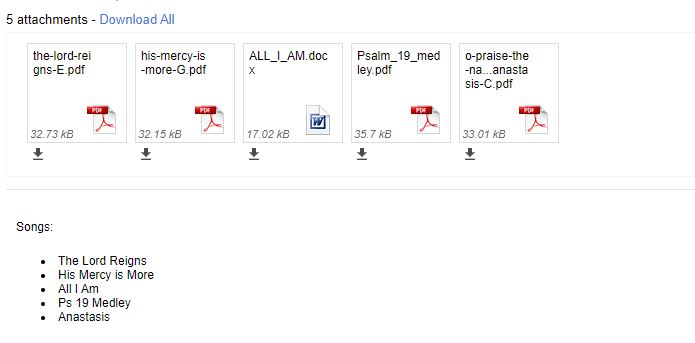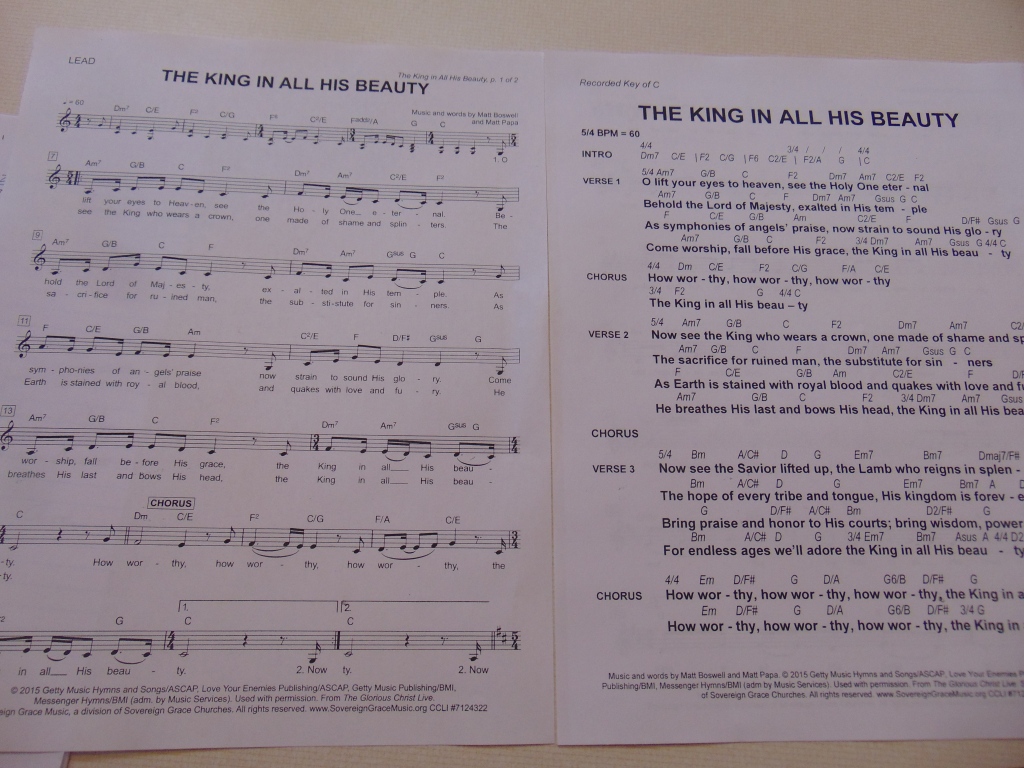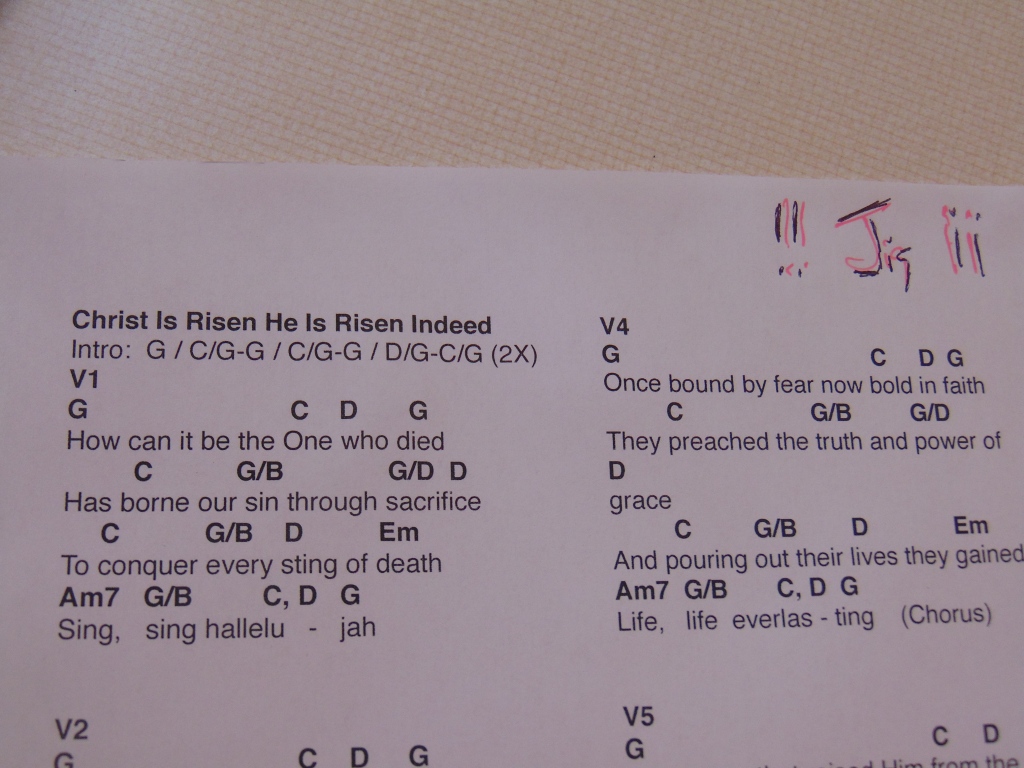First and Foremost
My gift and ability in Percussion was given to me by God, and it is a pleasure to use it for His glory. There has for a very long time been a part of me that has longed to be part of a Praise and Worship Team, but God knows the best timing for that. The wait has been worth it, there’s nothing I enjoy more than using my talents to bring God praise.
A number of people from my congregation have asked me some questions regarding hand percussion and the music on my stand on Sunday or Wednesday. So I’m going to answer those questions in this post.
How Things Start
Seeing that I also serve on the Usher Team there is a certain balancing act of merging the schedules so that I can serve in both aspects. I generally make sure that when I’m not scheduled to serve as an Usher, that I reach out to the various worship team leaders letting them know that if I am, if nothing else, available to play percussion.

During the Week
During the week leading up to when I serve on the worship team the team leader will then send out an email to those serving with a song list, sometimes with attached lyrics. The images above is a partial images of the one sent out for last Wednesday- which I recieved a good two days prior to the Wed night service.
This enables the participants to look up songs on youtube in order to listen to them, especially if they are new. This aspect is especially important to me as a hand percussionist, I will watch and listen to performances of a worship tune, and pay special attention to the percussionist and the beat.
There are not a whole ton of praise videos that feature hand percussion so often I’m trying to transpose and find the main beat that I can implement during a worship song with simple hand percussion to emulate the beat and syncopation of a drummer. For the record, some have asked if I have played a drumset, and I have indeed but it’s not somewhere that I’m comfortable.
What My Music Looks Like

I have included this image to show the two types of music that are available for a performer. On the left is what I call Staff Music, often referred to as lead music, because it’s for the lead instrument(s). It’s also the familiar one for those like me who played in band and orchestra. On the right is the same song with simply the chord progressions- for guitar and piano et all.
As a percussionist I don’t have to worry about keys at all, or chords, but I do have to worry about tempo (3/4, 4/4 etc). and volume <p (pianissimo) to <fff (triple forte) aka loud as you can.
Being that this was a new song for us having the staff music was helpful, I can read it, and get some kind of idea of where I should put my beats. This is a slower song, a quieter song in comparison to some others, especially the other one I’ll be sharing in this post.
During Friday’s practice for this Sunday’s service on this particular song I, for the most part, listened and played very gently as I tried to figure out the tempo and the rhythm of the song.
On my Bongo/Conga stand I have two different drums the one on my left has a larger head that leads to deeper hits and is generally my “Kick Bass” the drum to my right has a smaller head and I tend to use it for fill notes.
To answer another question I often get I don’t make notations like L for left R for Right and BH L or BH R for Bass Hits on my notes. For the most part that’s simply something that has come from having a knowledge of a song, knowing what sounds I want to make, and then trying to convince my hands into co-operating!
Accompaniying on slower songs is difficult for a percussionist of any kind because you’re playing in <p or just playing on the same beats and notes as everyone else but quietly. And that’s essentially what I ended up choosing to do with The King in All His Beauty, nice accenting but keeping it rather quiet.
But what if you have an opposite song?

Oh boy!
As you can see I made a note that this was a Jig, a Celtic style Jig has a very exact beat the drives through the entirety of the performance. In this case it was a Bass hit followed by two side hits every second and a half or so for the entirety of the song! Ordinarily there would’ve been backup from a Celtic Pan Flute, a fiddle or both- oh and the only videos I found were of a drum set as percussion.
However I knew of what had to be done, a consistent driving beat, however I knew I had to differentiate the beat slightly for the chorus or it would all just blend together. So I chose to focus on the drum to my right, smaller head and higher sound for all the hits including the bass in each verse- and then on the chorus I would switch the bass hit to the left hand drum while keeping the hits to the right drum head.
So for the verse it would be: Right (Bass hit) followed by Two Short Edge Hits.
Every second and a half or so…over and over then the last phrase in each verse I would shift my Bass hit to the Left drum while keeping the two edge hits on the right drum head.
And then phase the Bass hit back to the Right drum head for the start of the next verse.
And you’re keeping this up for the 3ish minutes that the song lasts, it’s highly enjoyable and exhilirating. I loved it. Even playing it four times today.
Other Various Things to Note
I don’t write anything on my music like hand hits or bass hand hits etc- that’s all memorized- it comes more naturally that way. In fact if I were to write it down I would only be confusing myself nd we don’t need that.
Other songs like for instance Anastasis, which we also played today, introduces something called Dynamics. Dynamics is when you vary the pitch or intensity of the same rythmn across multiple verses. Verse One Quiet, Verse 2 Louder- Choruses always loud except when we agree them not to be. Perhaps like in Verse 4 we want to pull back on almost everything so that we’re almost singing a cappella.
Something like that will be introduced by one of the accompianists and the team is asked for our thoughts, and then we practice the choice until we’re “on it” as a group.
In conclusion, if you’ve found this post interesting, let me know in the comments and I might write more on it in the future.
God bless, and He is Risen!
Ross